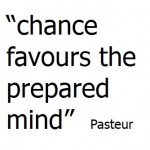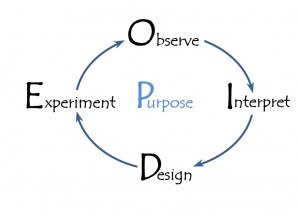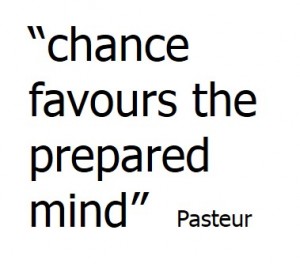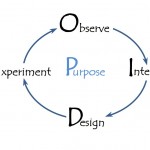
 Imagine that you are considering an initiative of some sort. It could be that you are a manager and you need to respond to signs of growing tension between two of your staff. Or perhaps you need to develop an approach to social media for your organization or business unit. Both situations are emergent. The details of how they will play out cannot be predicted with confidence. Also, your actions will create responses that will further influence the dynamics of the situation and could generate unforeseen or unintended consequences. Therefore, you need to be prepared and able to adaptively iterate your response as the situation emerges.
Imagine that you are considering an initiative of some sort. It could be that you are a manager and you need to respond to signs of growing tension between two of your staff. Or perhaps you need to develop an approach to social media for your organization or business unit. Both situations are emergent. The details of how they will play out cannot be predicted with confidence. Also, your actions will create responses that will further influence the dynamics of the situation and could generate unforeseen or unintended consequences. Therefore, you need to be prepared and able to adaptively iterate your response as the situation emerges.
The potential for downside risk in such situations can be mitigated by initially conducting a series of thought experiments. As with any real experiment these need to be planned and ‘observed’. The thought experiment must have an intent – either to test a design hypothesis or to generate insights on which to develop a future design hypothesis.
Thought experiments rely on your ability to mentally immerse yourself in the situation. In the case of tension between two of your staff, your design hypothesis might be that you need to get both of them together around a table and confront the issues that are creating the tension. In your thought experiment you would play that meeting out in your mind in sufficient detail to pick up any aspect that is likely to influence the conduct and outcome of the meeting. Your thought experiment may show that the tone of the meeting will be influenced by the expectations and frame of mind of the participants when they enter the meeting. This will highlight that the way you invite both to the meeting will be important. You will then need to revisit your design hypothesis to include a design for the initial setting up of the meeting.
You are now ready to rerun your thought experiment further into the meeting to see how it unfolds. You may get to a point where you simply to do not have a clear enough understanding of the context for the tension between the staff to be reasonably confident about how the meeting will progress. Because this is just a thought experiment, you may decide to make an assumption about the nature of the context and continue your experiment. If you do, it is important to be aware that the rest of the thought experiment is based on an assumption, not a fact. You may want to test several assumptions at this point to experimentally see how they affect the conduct and outcome of the meeting. Once you do this, you might find that, with your current level of context knowledge, the meeting is too risky at this time. You may then revise your design hypothesis to include some real information gathering before a joint meeting with both of your staff. Your previous thought experiment about the conduct of the meeting will be valuable in directing the nature and focus of the information gathering. Once you have gathered the information, you will probably rerun your thought experiment.
The social media example is more complex and strategic but still requires the same approach to a thought experiment: you need an initial design hypothesis; you need to be able to immerse yourself in the context in sufficient detail to recognise critical issues and decision points; you need to be aware of when you are making assumptions, and you need to be prepared to iterate the process and modify your design hypothesis on the basis of your learning.
I will flesh out the social media example in a future blog post.




Follow Us!